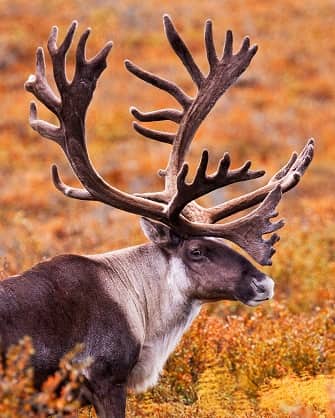Introduction - Caribou
The arctic deer that children know as a reindeer is actually a caribou. There are about 5 million of these herbivores throughout the world. They fall into one of three species; the Barren- Ground caribou, Peary Caribou and Woodland Caribou. Below is a list of interesting facts and information including where they live, what their diet consists of, and why they have such large hooves. The easy to read format is perfect for kids gathering information for research projects or those that just want to learn more about Caribou.Click here for a great selection of Amazon.com books about Caribou.
Physical Characteristics of Caribou
- The smallest Caribou in North America is the Peary Caribou while the largest is the boreal woodland caribou.
- Weight varies among species of Caribou and has drastic seasonal variations; also males are about 10 - 50 percent heavier than females. The average male weight, considering all species is between 146 and 661 pounds (66 - 300 kilograms); although they can reach weights of over 600 pounds (272 kilograms).
- The average height of males (considering all species) at the shoulder is 2.8 - 5.2 feet (85.3 - 158.5 centimeters). Females are smaller.
- The average length of males is 5.5 - 9.7 feet (167.6 - 295.7 centimeters) with females significantly smaller.
- Their bodies are covered with fur the color of which varies from grey to brown depending on the species. Caribou have two layers of fur to keep them warm; a dense undercoat and an outer- layer of long hair. The outer layer has air-filled hairs which actually help the Caribou float while crossing lakes and rivers.
- Typical Caribou antlers are about 3 feet wide (91.44 cm).
- Their large hooves enable them to travel easily through dense snow and the sharp edges allow them to navigate on ice and rocks. They use the underneath part of their hoof, which is hollow, to scoop away snow and search for food.
- Just like fingerprints, no two Caribou antlers are the same. In addition, they shed their antlers in the winter, after mating season, and they are the only species of deer in which both males and females grow antlers.
Basic Facts about Caribou
- The word caribou originates from the French word Qalipu which translates to "the one who paws".
- Full grown Caribou can eat as much as 12 pounds (5 kilograms) of food in one day.
- These mammals can reach speeds of up to 50 miles per hour (80.5 kilometers per hour).
- Aside from humans who hunt Caribou, they are preyed upon by bears, coyotes, wolves, lynx and cougars depending on where they live.
- Caribou are mammals and the females give birth to either one or two fawns at a time.
- Caribou are native to Canada, North America, Alaska, Russia and Greenland. They are well-equipped for the cold arctic climate and frozen tundra that surrounds them.
- Caribou are known for traveling distances in excess of 1,200 miles each year. They migrate south after the first signs of winter and return to the north when the weather warms.
- Grass, lichen and moss are the main staples in the Caribou's diet.
